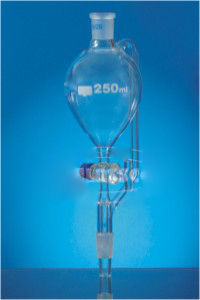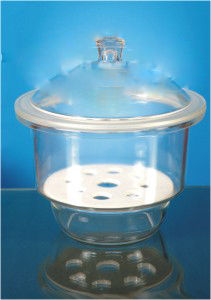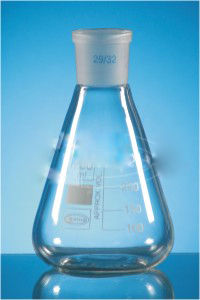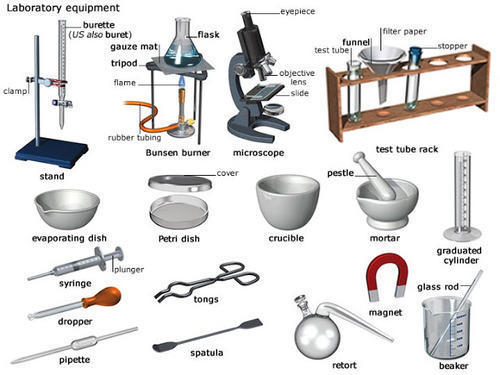Pressure Equalising Funnels, Pear Shape
Pressure Equalising Funnels, Pear Shape Specification
- Accuracy
- Accurate volume graduations wherever marked
- Control Type
- Manual stopcock operation
- Glass Type
- Borosilicate
- Temperature Resistance
- Up to 300C (typical for borosilicate glass)
- Shape
- Pear Shape
- Type
- Pressure Equalising Funnels
- Equipment Type
- Laboratory Glassware
- Equipment Materials
- Borosilicate Glass
- Material
- Borosilicate Glass
- Application
- Laboratory liquid transfer and separation; Uniform pressure equalization during addition of reagents
- Capacity (Ltr)
- Available in 25 ml, 50 ml, 100 ml, 250 ml, 500 ml, 1000 ml (varies by model)
About Pressure Equalising Funnels, Pear Shape
| Pressure Equalising Funnels, Pear Shape | |||||||||||||||||||||||||||||||||||||||||||
|
Precision and Durability for Laboratory Applications
The pear-shaped pressure equalising funnels are built with robust borosilicate glass or high-grade PTFE, ensuring both resilience and chemical resistance. Their design facilitates uniform pressure equalization, crucial for the safe addition of reagents during titration and separation processes. With a manual stopcock, users maintain exact control over liquid transfer, reducing procedural errors and enhancing experimental accuracy.
Versatile Compatibility and Easy Integration
Equipped with standard ground glass joints, these funnels seamlessly integrate with widely used laboratory glassware. Clear, permanent graduations make precise volume measurement straightforward, supporting both educational and advanced research laboratories. Their autoclave compatibility ensures easy sterilization, promoting safe and repeated usage.
FAQs of Pressure Equalising Funnels, Pear Shape:
Q: How do pressure equalising funnels facilitate safe reagent addition in laboratory procedures?
A: These funnels are designed with a narrow side arm for pressure equalisation and a manual stopcock, enabling gradual and controlled reagent addition. This system prevents sudden pressure build-up and minimizes the risk of splashing or uncontrolled reactions.Q: What are the material and chemical resistance advantages of these funnels?
A: Constructed from high-quality borosilicate glass or PTFE, these funnels exhibit excellent resistance to acids, alkalis, and most laboratory chemicals. Their durability ensures long service life even under harsh laboratory conditions.Q: When should I choose a PTFE stopcock over a glass one?
A: PTFE stopcocks are ideal when working with particularly aggressive chemicals or where non-reactivity and smooth stopcock operation are paramount. For general laboratory applications involving standard reagents, a glass stopcock is often sufficient.Q: Where can these pressure equalising funnels be used?
A: They are suitable for general liquid transfer, titrations, separations, and reagent additions in research institutes, educational labs, and industrial laboratory settings across India and internationally.Q: What sizes are available and how do I select the correct capacity?
A: Capacities range from 25 ml to 1000 ml. Selection depends on the total volume of liquid you plan to transfer or separate; choose a funnel that accommodates your maximum anticipated volume with some allowance for mixing or expansion.Q: Are these funnels compatible with all laboratory glassware?
A: Yes, the standard ground glass joints (various sizes available) ensure that the funnels fit seamlessly with most laboratory flasks, adapters, and other glassware from common laboratory brands.Q: What are the benefits of using clear, acid- and alkali-resistant graduation marks?
A: Permanent graduations offer accurate visual measurement, improving precision during experiments and ensuring the markings remain legible, even when exposed to harsh chemicals.

Price:
- 50
- 100
- 200
- 250
- 500
- 1000+
More Products in LABORATORY GLASSWARE Category
Soxhlet Extraction Apparatus
Temperature Resistance : Up to 300C
Shape : Cylindrical siphon design
Features : Durable, corrosion resistant, transparent
Glass Type : High quality borosilicate glass
Equipment Materials : Borosilicate glass, rubber, metal clamps
Material : Borosilicate glass
Dessicator with Lid, Plain
Temperature Resistance : Typically up to 120C
Shape : Cylindrical
Features : Airtight seal, durable body, chemical resistant, reusable lid
Glass Type : Transparent borosilicate glass
Equipment Materials : Borosilicate glass, porcelain plate
Material : High quality Borosilicate glass
Flasks, Conical, (Erlenmeyer) DIN 12387
Temperature Resistance : Resistant to high temperatures and thermal changes
Shape : Conical (Erlenmeyer)
Features : Graduated markings durable design heat resistant
Glass Type : Clear borosilicate glass
Equipment Materials : Borosilicate glass
Material : Glass
Laboratory Equipment
Temperature Resistance : High for glass and ceramic materials
Shape : Varies by equipment type
Features : Wide variety of lab tools
Glass Type : Borosilicate
Equipment Materials : Glass metal ceramic plastic
Material : Glass metal ceramic plastic
GST : 06ACOPS0805K1ZD
|
 |
SINGHLA SCIENTIFIC INDUSTRIES
All Rights Reserved.(Terms of Use) Developed and Managed by Infocom Network Private Limited. |


 Send Inquiry
Send Inquiry





